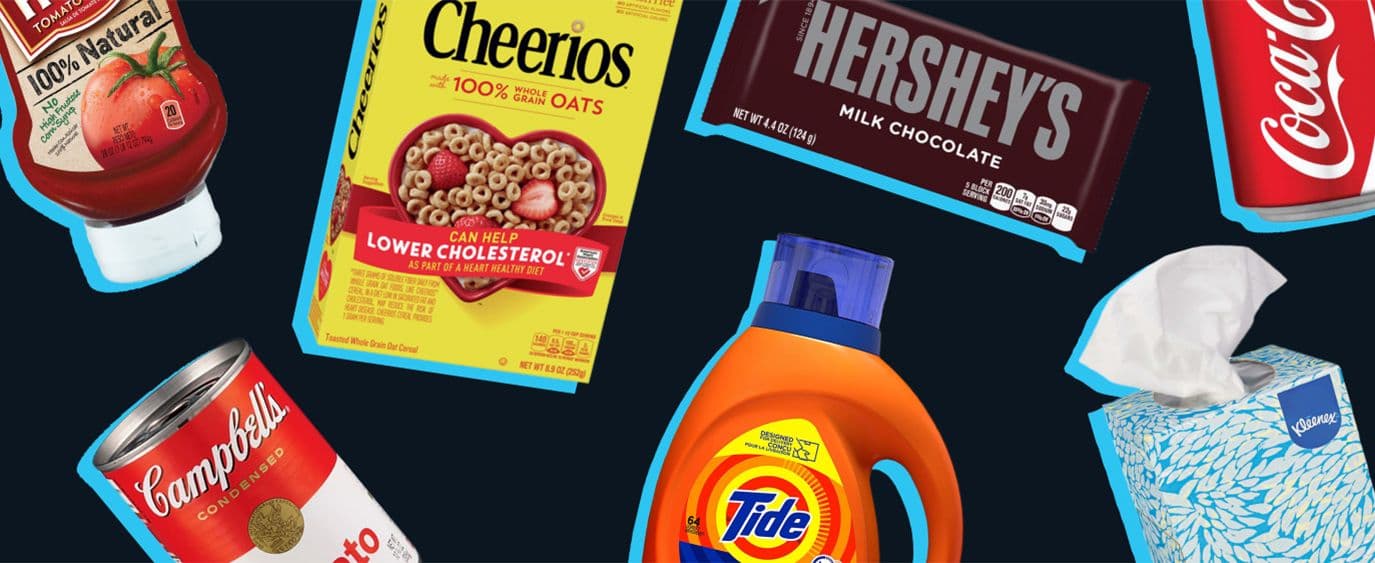Aug 14, 2018
Consumer Staples: Find Out About Defensive Stocks
Snack foods, diapers, and razors are all things people buy regularly.

Groceries, soft drinks and snack foods, toothpaste and toilet paper, laundry soap and pet food—you probably buy at least some of these every week without even thinking about it.
These items are known as consumer staples, because we buy them regularly, through good economic times and bad ones. Why? Because we need them.
In fact, consumer spending drives about 70% of all economic activity in the U.S. We spend up to a quarter of our income on consumer staples.
Here are some examples of top consumer staples companies, and the products you might be buying:
Campbell Soup, which makes its iconic tomato soup and hundreds of other varieties of soup, also produces Pepperidge farm cookies, V8 vegetable juice, and Pacific Foods organic broths.
Coca-Cola, which manufactures soft drinks including Coca-Cola, Fanta, Sprite, and Odwalla.
Conagra produces Hunt’s ketchup, Hebrew National hotdogs, not to mention Redi-Whip and Peter Pan peanut butter.
General Mills, producer of Cheerios, also makes Pillsbury products, Haagen-Dazs ice cream, not to mention Green Giant canned vegetables, and Nature Valley granola bars.
Hershey Company, the maker of chocolate bars, also churns out Kisses, Kitkats, Fifth Avenue bars, and Twizzlers, among others.
Kellogg’s gets your morning going with frosted flakes, Eggos, Rice Crispies, and Pop-tarts.
Kimberly-Clark’s products include household items such as Kleenex, Huggies, Scott toilet paper and Kotex.
Procter & Gamble, the maker of Pampers disposable diapers, Oral-B toothbrushes, and Tide laundry detergent.
Who makes consumer staples?
Big companies such as Johnson & Johnson and Procter & Gamble dominate the industry producing consumer staples, and their stocks are often known as defensive stocks because they can provide shelter when the economy encounters difficulties such as a slow down or a recession.
How can consumer staples help diversify your portfolio?
Consumer staples stocks have a reputation for independence from the usual ups and downs of the market. That’s because the companies that produce consumer staples rely on consumers’ everyday use of their products.
This dependability makes consumer staples different from items that people might buy when they have extra money lying around, such as new cars, clothing, and home appliances.
What’s the difference between buying toilet paper and a washing machine? Bigger purchases are said to be made with discretionary spending dollars, and they definitely depend on economic cycles—when times are good, people buy more of them, and fewer when the economy is not so good. We all need toilet paper, no matter how the economy is doing.
And investing in the consumer staples sector could potentially add a counterbalance to riskier growth stocks in your portfolio, as consumer staples may be less volatile than other assets.
When you’re thinking about your portfolio, however, it’s important to keep in mind that each person’s situation is different, and there is no one way to diversify your holdings. A proper diversification strategy should be tailored to your own situation.
Consumer staples and dividends
Many consumer staples companies also pay stock dividends, which is generally a sign of their stability and maturity as businesses. Dividends can also add to investors’ total returns over time. Examples of consumer staples companies have recently paid dividends include Hershey, Procter & Gamble, and Kimberly-Clark.
Consumer staples in 2018
Consumer staples haven’t had a great 2018. As a category, these stocks are down about 6.7% for the year, according to research.
Rising interest rates, the pressure to continually cut product prices, competition from e-commerce companies, and growing consumer preference for smaller independent brands have taken the wind out of the sails of the sector temporarily, according to some analyst research.
Nevertheless, during the late phases of strong economic cycles, such as the bull market we’ve been in for the last decade, consumer staples also tend to do better, according to analysts.
Consumer staples during the 2008 financial crisis
In fact, consumer staples were one of the best performing sectors during the financial crisis that began in 2008, dropping about half as much as the broader market. (During the Dotcom bust of the early 2000s, when the S&P 500 lost half its value, returns on consumer staple stocks actually increased 1.2%, according to reports.)
While consumer staples companies may grow more slowly than the high-flying companies in the technology industry or other red-hot sectors, they tend to grow dependably over time. For example, in 2018, the sector is expected to notch earnings growth of approximately 11%, about half the rate of the broader S&P 500 index.
Meanwhile, consumer spending in the U.S. on staples is expected to grow by about $600 billion by 2020, according to investment research.

Investing made easy.
Start today with any dollar amount.
Related articles

investing
Dec 11, 2025
How to Invest through the Holidays—Without the Stress

investing
Oct 23, 2025
Why Millions Are Canceling Disney+ and Hulu and What It Means for Investors

investing
Aug 15, 2025
Money Insights

investing
Jul 07, 2025
How to start investing: a guide for beginners

investing
Jun 04, 2025
Growth Stocks to Invest in for 2025

investing
Jun 03, 2025
Sustainable Investing Stocks to go after in 2025
By using this website you agree to our Terms of Use and Privacy Policy. To begin investing on Stash, you must be approved from an account verification perspective and open a brokerage account.
